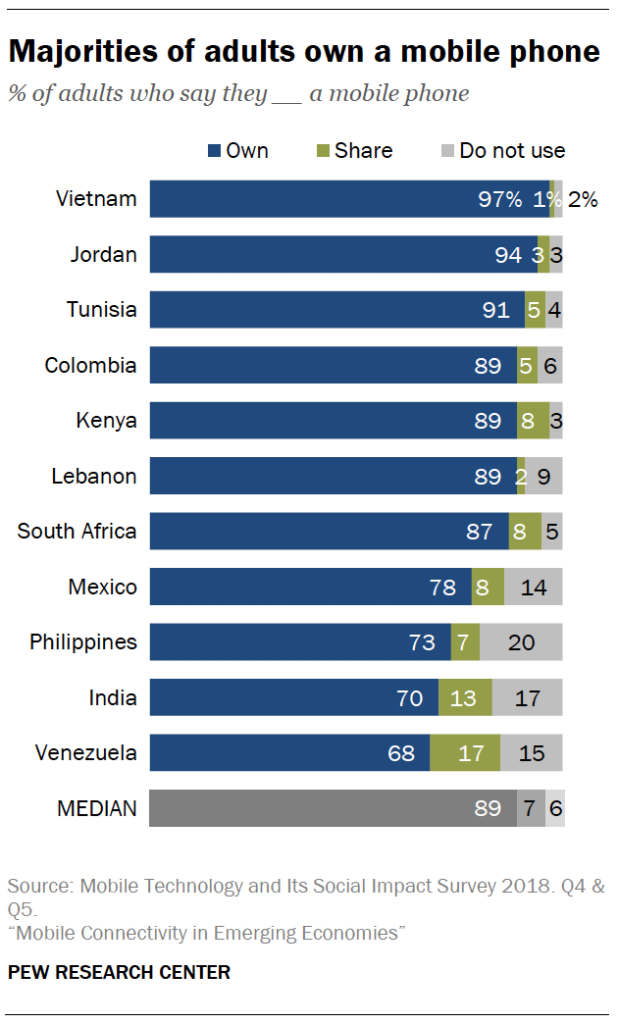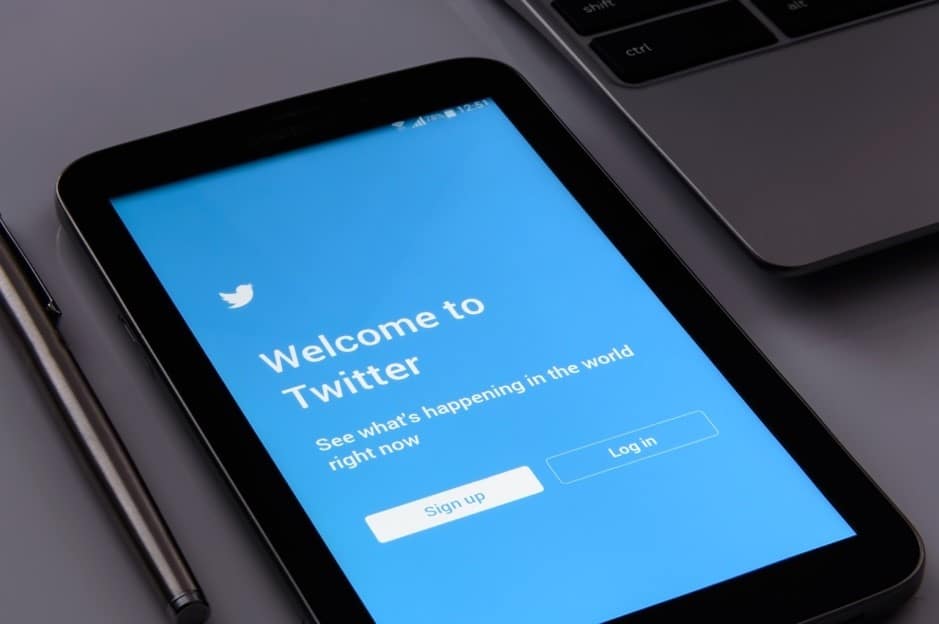Company: X.com
Founders: Jack Dorsey | Evan Williams | Biz Stone | Noah Glass
Year founded: 2006
CEO: Linda Yaccarino
Headquarters: San Francisco, California, United States
Employees (Dec 2019): About 1,000
Ticker Symbol: TWTR
Type: Private
Annual Revenue (Dec 2023): US$3.4 Billion
Products & Services: X Social Networking | Periscope | Promoted Tweets | Promoted Accounts | Promoted Trends | Micro-Blogging | MoPub | Audience Ads Platform
Competitors: Facebook | Instagram | LinkedIn | Google | Snapchat | Whatsapp | Pinterest | MySpace | Orkut | Quora | Microsoft | YouTube | WeChat | Tumblr |Tencent | Vkontakte
- Jack Dorsey was the first person to post anything on Twitter on March 21, 2006.
- 44% of the total 1.3 billion Twitter accounts created since the company was founded were open and remained dormant until they were closed without sending a single tweet.
- Twitter was initially developed as an SMS service named “FriendStalker.”
- #Hashtags were not invented by Twitter but by American blogger Chris Messina in 2007 and became an instant hit and success.
- The famous blue Twitter bird is called Larry.
Twitter’s Overview
Twitter, now X.com, is a social networking site that offers a platform where people can broadcast short posts known as Tweets. The Tweets can contain text, videos, photos, and links. Founded in 2006, it has become one of the most significant microblogging services, with about 335.7 million users globally and about 259.4 million daily active users.
The social networking site initially allowed users to share short 140-character posts. It has since carried significant upgrades, allowing users to use 280 characters in a single tweet. Its short messaging features have become a valuable tool for marketers targeting a given target base.
The platform has evolved into a hub for discussions and exchanging thoughts, attracting a large community of social media enthusiasts. Numerous individuals converse on various subjects, including politics, current affairs, and specialized areas.
Elon Musk completed the acquisition of Twitter for $44 billion in 2022 after months of lawsuits and verbal mud-sliding. With the acquisition, he began a massive restructuring, with at least four executive officers fired and thousands of employees deemed redundant.
The restructuring came as Musk insisted he wanted to make Twitter a freewheeling place where all types of commentary are allowed without censorship. He has since reinstated some users, including Donald Trump, who were banned from the platform. Musk also renamed the social networking company to X, insisting the name change represents plans to create an everything app.
We can learn a lot from Twitter’s SWOT Analysis.
Twitter’s Strengths
1. Highly Influential
Twitter’s Hashtags are the most influential and impactful features any social media platform offers. Hashtags can mobilize communities, overthrow governments, and address injustices. While Hashtags provide an easy way of finding and searching content on the platform, they have also become an essential aspect of marketing and spearheading campaigns while boosting interactions.
From the #Me-too Movement to #FakeNews and unity behind a boy’s nuggets under #NuggsforCarter, Twitter has proven its influence and impact time and time again. With the use of the right Hashtags, brands, people, and governments have been able to drive crazy engagement and traffic on the platform.
2. Monetization Opportunities
Twitter offers a variety of options that people and brands can use to monetize their content and generate revenues. They include advertising promoted tweets and promoted trends, which also generate revenues. Businesses leverage these features to reach and interact with a large audience to drive sales and, in the process, pay a fee from which Twitter generates advertising revenues.
3. Loyal Customer Base
Twitter boasts of being one of the most loyal customers, attracting marketers through advertising campaigns. For instance, about 250 million visit X daily to share and view various posts, with monthly active users of about 335 million.
On average, active customers spend about 34.1 minutes on the app, affirming Twitter’s status as the third most used social networking app on engagement levels.
4. Strong Market Share
Twitter is one of the world’s biggest micro-blogging and social media platforms in terms of market share. It is ranked as the fourth largest, with a market share of 7.57%, and behind Facebook, Instagram, and YouTube. Twitter is a force to reckon with and can leverage its position to advance its interests.
5. Famous for News and Marketing
Twitter has transformed into an official communication channel. Information is conveyed quickly and efficiently as a simple tweet. Consequently, it has become an essential app for accessing all kinds of news and for marketers targeting over 250 million daily active users. An active population for politicians, politicians, journalists, journalists, celebrities, and comedians has made it one of the top apps for news and marketing, given the ever-high engagement levels.
From communications by governments like the White House to famous personalities and businesses. According to Statista survey, 32% of companies rely on Twitter for business-to-business marketing (worldwide).
6. Stable Financial Position
Twitter’s financial position has stabilized ever since Elon Musk acquired it. The company is reported to have generated $3.4 billion in revenues in 2023 despite experiencing a massive decline in advertising due to the cyclical nature of ad spending. Additionally, it reduced its non-debt expenditures to $1.5 billion from a projected $4.5 billion following an aggressive restructuring drive that involved cutting cloud services bills by 40% and closing one data center.
7. Broad Product Portfolio
Twitter has made several strategic acquisitions to stay ahead of the game and integrate new features into its flagship app to enhance engagement and attract more users. These acquisitions have enhanced Twitter’s capabilities to serve its customer base.
Some of its most significant acquisitions are as follows:
- Periscope – live video streaming
- Magic Pony – machine learning
- Gnip – API aggregation
- MoPub – mobile advertising
- Lightwell – conversation initiatives
- TellApart – advertisement
- TweetDeck – dashboard application
- TapCommerce – targeted advertisement
Following the Gnip acquisition, Twitter was able to extend its data platform and its existing public API. The acquisition of Magic Pony was part of an effort to enhance photos and video delivery, while TapCommerce helped enhance mobile marketing. TellApart helped boost digital advertising.
8. Innovative and fun features
From trending topics to Hashtags and retweets, Twitter offers the most innovative and practical features that have made it an ideal platform for marketing. Consequently, it is a hub for influencer marketing whereby influencers partner with various brands to advertise products and push a course.
Additionally, Twitter offers analytics tools that allow users and brands to track their performance and interaction on the platform. The information has been used to enhance and improve marketing. These features convey the latest information, allowing users to respond and express their thoughts.
Twitter’s Weaknesses
1. Algorithm Inefficiency
Twitter needs help fine-tuning its algorithm to satisfy its users. Twitter’s algorithm has come under fire for needing to be more precise and consistently present content that aligns with users’ preferences, resulting in a growing number of users feeling annoyed and withdrawing from the platform.
The algorithm’s inner workings still need to be explained to users, leaving them unaware of the criteria behind the content they encounter. For instance, users might encounter content that contradicts their views or is of no interest to them. Additionally, the algorithm has faced criticism for spreading false information and hate speech, as it aims to display content likely to capture users’ attention, regardless of its veracity or negative impact.
Users have been dissatisfied with Twitter’s search functionality, timeline, irrelevant/fake tweets, and harassment/ abuse. If Twitter does not invest in product innovation, it will soon lose its value proposition.
2. Over-reliance on the US Market
Even though Twitter engages globally, it relies heavily on the US market. For instance, the US market accounts for about 50% of active users, or 105.42 million. Japan is the only country that comes a close second with 73.4 million users, and India is third with 26.08 million users. Over-reliance on the US market has posed significant problems in the past. For instance, the company suffered a 59% loss in advertising revenue in the US in 2023 and has consistently fallen short of its weekly sales projections by up to 30%.
3. Over-dependence on Ads
If we look at Twitter’s business model, a large portion of Twitter’s revenues come from advertisements, accounting for about 90% of its portfolio. While the company also generates revenues from data licensing and services, they account for less than 10% of its total revenues. Reliance on advertising has proved to be a big problem, especially in the wake of Elon Musk’s takeover, which resulted in the loss of almost half of advertising revenue.
4. Lack of Diversification
Twitter has put all its resources, aspirations, and future into social media networking. Twitter solely relies on its social media platform and doesn’t diversify. If a new technology emerges and replaces social media platforms, the company will fade into oblivion within a short period.
5. Fake Accounts
Twitter has always struggled with fake account problems, just like other social networking apps. Some people create fake accounts that don’t end up doing well but engage in scamming people out of money and spreading misinformation. The fake account problem has always put off advertisers looking to advertise on the platform. It was also a significant problem that almost put off Elon Musk from buying, as he cited the proliferation of bots in the network that comprised about 5% of daily active users.
6. Data Safety and Privacy Concerns
Twitter is always subject to data leaks due to its access to vast troves of data. Data losses are always a common risk due to targeted attacks or exploitation of system vulnerabilities. The company has also been accused of sharing people’s information without their consent to advertisers as one of the ways of fuelling its advertising business. Consequently, the company is always at risk of facing off with regulators over data security and privacy. In 2022, the company was fined $1.50 billion for mishandling users’ contact details.
Twitter’s Opportunities
1. Online Store
The over 200 million people who use Twitter daily present a perfect target market that the social network can monetize using an online store. Given that the global e-commerce market is growing at a compound annual growth rate of 8.5% and is projected to be worth $7.5 trillion by 2032, Twitter can tap into the massive opportunity by integrating online stores into the platform. Businesses are already marketing their products on Twitter. It would be a great value added to offer virtual stores or a marketplace to sell directly to users like Instagram.
2. News Monetization
While the global advertising market is projected to reach $ 1 trillion in 2024, Twitter is looking at a massive opportunity to strengthen its advertising streams by monetizing news on the platform. Most media companies thrive on running advertising campaigns alongside their regular programming and news. In the digital era, Twitter remains one of the preferred platforms for accessing breaking news from across the globe. Likewise, the company can create a dedicated section or portal that aggregates the latest news from various sources, organizations, and traditional journalists.
3. Offer Remote Working Solutions
While the COVID-19 pandemic came and went, the practice of working from home has continued and keeps on growing. Likewise, the remote workplace service market has experienced remarkable growth driven by the convergence of technological advancement and evolving work dynamics. In 2022, the market for remote workplace services was estimated at $20 billion. Forecasts suggest a surge to an impressive $138.30 billion by 2031, with a compound annual growth rate (CAGR) of 23.90%.
Twitter has the infrastructure, know-how, and resources to offer remote working solutions and tap into the demand from users to work from home. The opportunity is tremendous due to the proliferation of high-speed internet and the widespread adoption of cloud computing.
4. Expand into Music or Video Streaming Services
The global music streaming size is growing at a CAGR of 14.7% and is projected to be worth $116 billion by 2031 from $38.75 billion as of 2023. The robust growth stems from the growing demand for music services and websites that allow users to view videos, listen to audio, and subscribe to podcasts. Similarly, the video streaming market is projected to reach $137 billion by 2027 amid the growing popularity and demand for streaming services globally.
With vast financial resources at its disposal, Twitter can enter the lucrative music streaming and video streaming markets by acquiring medium companies operating in the market. For one, music and video streaming businesses can offer opportunities to grow.
5. Focus on Mobile-Based Ads
It’s no secret that most people access Twitter using mobile devices like smartphones and tablets. Likewise, advertisers are increasingly adopting mobile ads to promote and run campaigns. Consequently, the mobile advertising market is growing at a CAGR of 21.8% and is projected to be worth $214 billion by the end of the year.
To increase ad revenues, Twitter can focus on mobile-friendly ads significantly when expanding its user base in emerging markets. The company can strengthen its advertising revenue base by making it easier for businesses and brands to target people using mobile ads.
 Image credit: Pew Research Center
Image credit: Pew Research Center
Twitter’s Threats
1. Stiff Competition
Twitter operates in one of the most competitive sectors with various networking apps. Over the years, it has had to face off with Facebook, but new emerging apps like TikTok continue to stifle its attractiveness and use in the sector.
Stiff competition is a serious threat since the increase in the number of users in the next five years is projected to be very slim. Consequently, the company could need help attracting advertising spending, which depends on user numbers.
2. Suppression of Freedom of Speech
Authoritarian and military governments, as well as dictators, hate any tool that the masses can use to overthrow them from power and impose a total ban on Twitter. Democracies can also restrict Twitter to curb freedom of speech. For example, Twitter is officially blocked in China, and the New York Times reports that Chinese police officials are questioning and detaining Twitter users. The app also faced restrictions in Pakistan amid protections over vote rigging. It also remains banned in Iran as it is seen as a tool that can be used to ignite protests over the current regime.
3. Unequal Power to Influence
The majority of people on Twitter don’t engage in sharing content frequently. In reality, the norm is for users to only post on Twitter once every month, on average. This suggests that most Twitter visitors come to the platform to read rather than post. The statistics reveal that just 10% of Twitter users account for a whopping 92% of all tweets from U.S. users, indicating a selection of users who are the main contributors to the content on the platform.
4. Influencer Quitting the Platform
An influencer can leave Twitter and go to another competitor’s platform anytime. Its competitors led to the mass migration of followers and impacted Twitter’s revenue tremendously. Over the years, celebrities with huge followings have threatened to leave the platform, especially after Elon Musk acquired it and vowed sweeping changes in his plan to enhance free speech. Shonda Rhimes, Sara Bareilles, and Toni Braxton are some influencers who have threatened to leave, appalled by some of the free speech they have seen. Musk has also confirmed the mass exodus of some advertisers. The exodus threatens to disrupt the company’s lucrative advertising business.
5. Regulatory Pressure
Regulatory bodies can enact stricter rules and regulations to improve data safety, protect intellectual property rights, and eradicate fake news, insensitive content, and misinformation. In the European Union, the platform is constantly scrutinized over claims it is used to spread disinformation. It has also faced off with regulators in the US over privacy practices and the protection of user data. Increased regulatory scrutiny only disrupts the company’s core company with the risk of fines to settle claims. These regulations can lead to mass migration from Twitter.
6. Twitter has lost its Cool
Twitter is designed as a one-size-fits-all platform and lacks personalization.
For instance, most Gen Z prefer TikTok because they can customize their favorite videos, and millennials use Facebook, Pinterest, Snapchat, and Instagram to utilize different media, leaving Twitter with older generations efficiently. This makes Twitter’s future uncertain.
References & more information
- Hays, K. (2023 May 2). Elon Musk has chopped Twitter down to about 1,000 employees. Business Insider
- Shepherd, J. (2024 April 23). 23 Essential Twitter (X) Statistics You Need to Know in 2024. Social Shepherd.
- Zote, J. (2024 May 22). 40 Twitter (X) stats to know in marketing in 2024. Sprout Blog
- Dixon, S. (2024 June 12). Average time spent per day on select social media platforms in the United States in 2023. Statista.
- (2024 May). Social Media Stats Worldwide – May 2024. Statcounter GlobalStats.
- Dencheva, V.(2023 September 12). Leading social media platforms used by B2B and B2C marketers worldwide as of January 2022. Statista.
- Hu, k, Dang, S. (2023 March 8). Musk says Twitter could be cash flow-positive next quarter. Reuters.
- Gorton, D. (2023 March 19). Top 5 Companies Owned by X. Corp (Formally Twitter, Inc.). Investopedia.
- Hsu T. Mac, R. (2023 June 5). Twitter’s U.S. Ad Sales Plunge 59% as Woes Continue. New York Times.
- Beltus T. (2023 October 25). How Twitter Makes Money [Complete Guide]. LinkedIn.
- O’Brien M. (2022 October 3). Musk now gets chance to defeat Twitter’s many fake account. Associate Press.
- Milmo, D. (2022 May 26). Twitter fined $150m for handing users’ contact details to advertisers. The Guardian.
- Wankhade, U. (2024 February 23). Global Retail E-Commerce Market Size, Forecast, Analysis & Share. LinkedIn
- (2024 March). Remote Workplace Services Market Insights. Skyquest.
- (2024 March). Video Streaming (SVoD) – Worldwide. Statista.
- (2024 June 3). The mobile advertising market size. Fortune Business Insight.
- Mozur P. (2019 January 10). Twitter Users in China Face Detention and Threats in New Beijing Crackdown. New York Times.
- Hussain Abid. (2024 February 19). X faces restrictions in Pakistan amid protests over alleged vote rigging. Aljazeera.
Tell us what you think? Did you find this article interesting? Share your thoughts and experiences in the comments section below.












Add comment